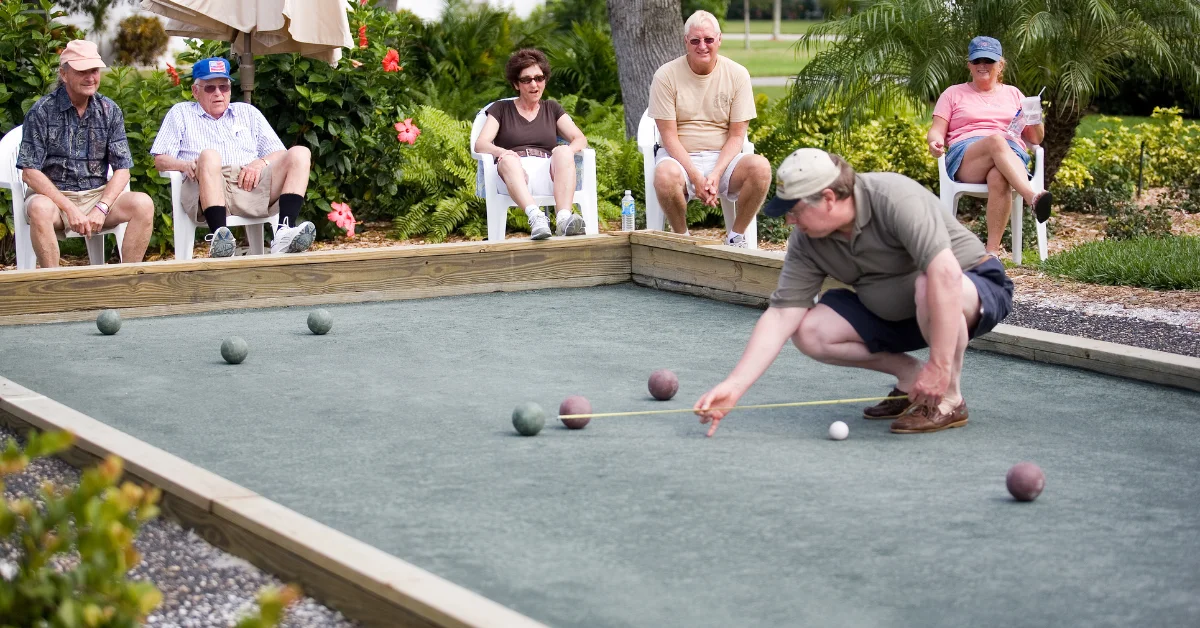Differences Between Bocce and Pétanque
Discover the unique differences between Bocce and Pétanque, two beloved lawn games with rich histories and distinct gameplay strategies. Each game has its charm and complexity, making them favorites in different parts of the world.
Origins and History
Bocce’s Italian Roots
Bocce’s origins trace back to ancient Roman times, evolving into a popular pastime in Italy. This game of precision and skill was nurtured through Italian culture and has become a staple in recreational sports globally.
Pétanque’s French Connection
Contrastingly,
Pétanque originated in early 20th century France. It started as a variation of ‘jeu provençal’, adapting to accommodate players who preferred a stationary stance during play, thereby creating a new, inclusive game.
Equipment and Court Specifications
Bocce Balls: Material, Size, and Weight
Bocce balls, traditionally made from resin or wood, are approximately 107 mm in diameter, weighing around 920 grams. The heft and size of Bocce balls make them suitable for the strategic rolling and tossing integral to the game.
Pétanque Balls: Composition and Characteristics
In contrast,
Pétanque balls, or boules, are made of metal and are smaller, with a diameter of 74 to 80 mm, and heavier, weighing between 650 to 800 grams. This design caters to Pétanque’s focus on precision throwing and strategic placement.
Bocce Court Design and Rules
Court Construction and Sideboards
Bocce courts are known for their raised sides and end boards, which can influence gameplay. The sideboards offer players an opportunity to use bank shots for strategic advantage, adding an extra dimension to Bocce.
Pétanque Playing Surfaces
French Courtyards and Beyond
Traditional Pétanque is often played in French courtyards, on surfaces like dirt or gravel. These terrains add unpredictability to the boules’ roll, making terrain adaptation a key skill in Pétanque.
Playing Techniques and Strategy
Throwing Techniques in Bocce
Bocce players utilize underhand throws, aiming to place their balls close to the small target ball, or pallino. The game involves a combination of offensive and defensive strategies, such as knocking opponents’ balls away from the pallino.
Pétanque’s Precision Toss and ‘Pied Tanqué’
Pétanque is distinguished by its unique throwing technique, where players must keep their feet together (‘pied tanqué’) in a fixed circle while throwing. This rule requires players to stand stationary, adding a layer of challenge to their precision and skill. The goal is to toss the metal boules underhand, aiming to land them near the cochonnet, or target ball. This technique emphasizes control and accuracy, making strategic placement crucial in Pétanque gameplay.
Scoring and Gameplay Dynamics
Scoring in Bocce
In Bocce, scoring is based on the proximity of the balls to the pallino after all balls have been played. The game emphasizes strategic placement and the ability to adapt to changing situations on the court.
Pétanque Scoring Nuances
Pétanque’s scoring, while similar, often involves more precision due to the smaller playing area and the weight of the metal boules. This leads to a different tactical approach compared to Bocce.
Conclusion
From the sun-drenched piazzas of Italy to the quaint courtyards of France, Bocce and Pétanque offer unique experiences filled with strategy, skill, and social enjoyment. Understanding the differences between these two games enhances the appreciation for their rich cultural backgrounds and the joys they bring to players around the world.
